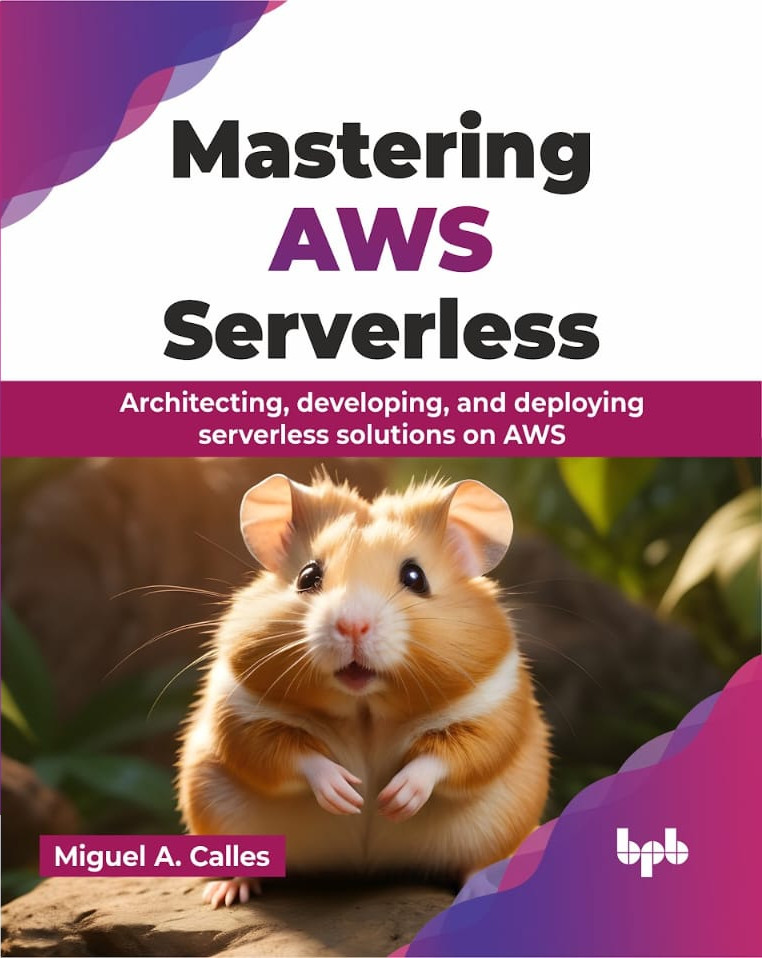
Learn Serverless Step by Step
Build an event-driven architecture and application in the AWS cloud.

Build an event-driven architecture and application in the AWS cloud.
This book focuses on teaching by doing. By the end of this book, you will have created a serverless frontend and backend.
100+
405
12
This book targets professionals and students who want to gain experience in software development, cloud computing, web development, data processing, or Amazon Web Services. It is ideal for cloud architects, developers, and backend engineers seeking to leverage serverless services for scalable and cost-effective applications.
We will lay the foundation of AWS serverless. We will start with an overview of cloud computing and how that enabled serverless computing. After that, we will learn about the different services used in serverless architectures and designs, including serverless computing, serverless storage, and other services.
We will provide an overview of different types of serverless applications. There are many ways to use serverless. We will cover the most common ways to build applications using AWS serverless, which include website development, application programming interfaces, mobile app development, data processing, and notifications.
We will provide an overview of how to design serverless architectures and design topics to consider. We will review monolithic and client-server architectures and how they can migrate to the AWS cloud and transition to AWS serverless. We will discuss using event-driven, microservices, and ad hoc architectures serverless.
We will provide hands-on exercises to create a serverless website. The hands-on exercises will cover setting up an AWS account, registering a new domain with Route 53, enabling and disabling S3 website hosting, creating a record in Route 53, requesting a certificate from AWS Certificate Manager (ACM), creating a CloudFront distribution, and create aliases for the distribution in Route 53.
: We will create and manage an API, send requests to a serverless function, and learn about its OpenAPI specification. The hands-on exercise will cover adding a new web page to use the API, invalidating the distribution to clear CloudFront cache, creating an API with API Gateway, integrating a Lambda function with the API, and exporting the API integration.
We will focus on saving and using data using object storage and serverless databases. The hands-on exercises will cover creating an S3 bucket for object storage, getting the object contents from a Lambda function, creating a DynamoDB database table, and getting the table data from a Lambda function. You will modify the function setting and security permissions multiple times in this chapter and throughout the rest of the book.
We will demonstrate how a website could add authentication and authorization to restrict certain pages to logged-in users. We will conduct hands-on exercises to add authentication and authorization using Amazon Cognito by creating a new Cognito user pool, customizing its hosted user interface, and updating the website. We will update the website by adding the login and logout buttons, the auth callback page, the logout page, and the account page.
We will focus on how to use serverless computing to process data. The hands-on exercises will cover tracking authentication callbacks with an API and transforming that data using a Lambda function and an EventBridge schedule rule. We explore analyzing the transformed data with machine learning.
We will send notifications using email, text messaging, and mobile push notifications. The hands-on exercises will cover configuring SES for emails, sending an email from a Lambda function, setting up an SNS topic to trigger a Lambda function, sending a topic message from a Lambda function, setting up SNS for text messages, and sending a text message from a Lambda function.
We discuss automation tasks that a serverless architecture can support. We will explore automation tasks that include setting up backups, analyzing text using Amazon Comprehend, performing text-to-speech using Amazon Polly, analyzing images using Amazon Rekognition, and auditing security settings using AWS Config.
We will focus on architecture best practices when using serverless computing. We will walk through the AWS Well-Architected Framework and apply its “Serverless Application Lens”. The Framework and Lens provide various best practices. We will review them to help you better architect and design your serverless applications.
We will focus on the next steps you can explore to continue mastering AWS serverless. We only covered a few topics in-depth but explored them since it was necessary to gain exposure to them. Some of the following steps will include advanced topics such as attaching layers to Lambda functions, orchestrating function execution using AWS Step Functions, automatically creating resources using infrastructure as code with AWS CloudFormation, AWS Serverless Application Model, and AWS Cloud Development Kit, creating repeatable deployment processes using AWS CodeBuild and AWS CodePipeline, and testing serverless applications.
Are you ready to learn serverless on AWS step by step?